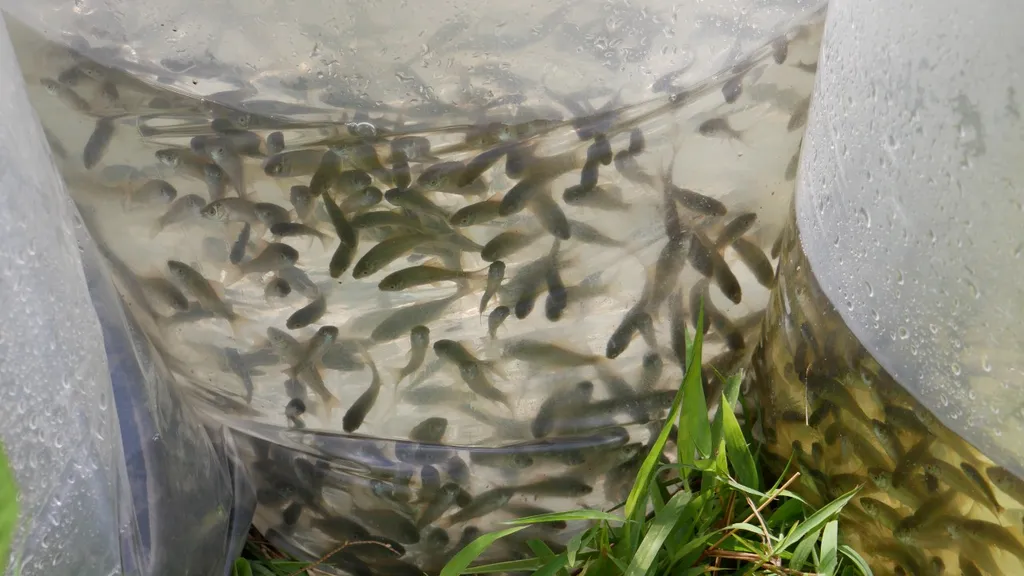In the heart of Indonesia, a critical study is shedding light on the intricate balance between water quality and fish productivity, with significant implications for both local economies and environmental management. Setya Widi Ayuning Permanasari, a researcher from Brawijaya University, has delved into the waters of Wonorejo Reservoir, uncovering insights that could reshape how we approach aquatic resource management.
Wonorejo Reservoir, fed by the Kali Wangi River, receives a constant influx of water laden with waste from human activities, agriculture, settlements, and animal husbandry. This continuous input has led to heightened water fertility, a condition that Permanasari’s research has meticulously documented. “The reservoir’s water quality parameters, such as temperature, dissolved oxygen, and nutrient levels, paint a vivid picture of an ecosystem under stress,” Permanasari explains. Her findings reveal a reservoir teetering on the edge of hypereutrophic conditions, where excessive nutrient levels fuel rapid plant growth, deplete oxygen, and disrupt aquatic life.
The study, published in the Journal of Fisheries and Marine Research (JFMR), employed the Tropic State Index (TSI) method to assess water quality. The results were stark: the reservoir’s primary productivity ranged from 1.63 to 4.55 g C/m³/day, with TSI values indicating heavy eutrophic conditions. This elevated productivity, while seemingly beneficial, can lead to detrimental effects such as algal blooms and fish kills, ultimately impacting the reservoir’s fisheries potential.
Permanasari’s research estimated the fisheries potential of Wonorejo Reservoir at approximately 3,963.252 tons of fish per year. However, the hypereutrophic state of the water poses a significant challenge to sustainable fisheries management. “Understanding the current state of the reservoir is crucial for developing effective management strategies,” Permanasari emphasizes. “This knowledge can guide local governments and reservoir managers in implementing measures to maintain a balanced ecosystem, ensuring the long-term viability of the fishery.”
The commercial implications of this research are profound. For the energy sector, which often relies on reservoirs for hydroelectric power, the study underscores the importance of integrated resource management. Balancing water quality and fish productivity can enhance the sustainability of both fisheries and energy production, providing a stable foundation for local economies.
Permanasari’s work also highlights the need for ongoing monitoring and adaptive management strategies. As climate change and human activities continue to impact aquatic ecosystems, the ability to respond swiftly and effectively to changes in water quality will be paramount. “This research is just the beginning,” Permanasari notes. “It sets the stage for further studies and collaborative efforts to protect and enhance our valuable water resources.”
In the broader context, this study serves as a call to action for policymakers, researchers, and industry stakeholders. By embracing a holistic approach to water management, we can ensure that reservoirs like Wonorejo not only support thriving fisheries but also contribute to the sustainable development of the communities that depend on them. As Permanasari’s research demonstrates, the path to a more sustainable future lies in understanding and respecting the delicate balance of our aquatic ecosystems.

